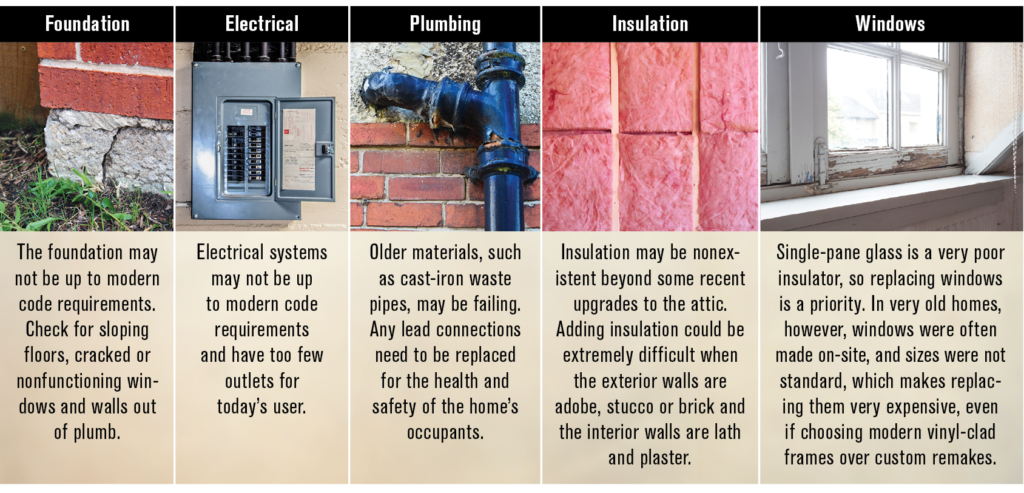Historic homes aren’t for everyone, and agents involved in these transactions should be prepared for quirks
By Myrna Traylor
For some people, having a home means more than living in a nice collection of boxes.
For them, a home is part of a legacy. It might be a legacy that the homeowner will pay forward to their heirs, or the home itself has a legacy in the community or region they are now stewards of.
When a home has historic significance or is part of a historic district, the mechanics of the transaction are the same as for any home sale. It gets tricky when other entities, such as an historic preservation board or national registry, are involved in setting rules for how the home must be maintained—forever (or the nearest thing to it).
Is it significant?
The first thing a REALTOR® should be aware of when a particularly old or architecturally unique home is coming on the market is whether it has been deemed significant and by whom. The National Register of Historic Places, a part of the National Park Service, recognizes “places worthy of preservation” and can include individual homes, buildings, structures or even sections of neighborhoods with cultural importance. The current list includes more than 96,000 properties.
Places on the National Register usually also come under the purview of a state office of preservation and perhaps a local historical society. The state and local groups usually uphold the rules about what can be altered on the exterior of a listed home.
Steve Epstein, CRS, senior partner, The Epstein Partners, Keller Williams Realty in Montecito and Santa Barbara, California, lives in a very old community and has been selling real estate there for 35 years. “Santa Barbara and Montecito date back over 200 years,” he says. The city of Santa Barbara held its bicentennial shortly after the U.S. bicentennial, celebrating its status as an incorporated city under Spanish control. “People don’t think of Southern California as having a lot of history, but I’ve sold quite a few homes that were built without indoor plumbing.”
Challenges abound
Homeowners with historic homes face challenges, even when it comes to regular upkeep, says Epstein. “I jokingly refer to them as ‘hysterical landmarks’ because the people in the committees can get so riled up,” he says. “I had a client who tried to match the trim color on their property, and somebody walked by and noticed it was a shade off and reported them. They had to repaint the trim.”
REALTORS® should be aware of the differences between homes with a specific historical or architectural designation and those that are just wonderfully vintage. For example, Carl Medford, CRS, CEO of the Medford Real Estate Team of Keller Williams Advisors in Fremont, California, who works in the Bay Area, says that owners of “important” homes have different attitudes and needs when it comes to renovations. “We have a lot of [midcentury developer Joseph] Eichler homes in the Bay Area,” Medford says, “and their owners fall into two categories: the Eichler owners who have tried to maintain the integrity of the way the house was built—which can be a bit of a problem because some of those come with some severe design flaws, like leaky radiant heating pipes in a concrete slab that you really can’t repair unless you tear up the floors—and others who just don’t care, and they modernize the whole thing.” Although they are “historical,” because these homes are not governed by any historical society per se, their fate is up to the whims of the current owners.
Strategies for sales
When it comes time to sell a historic home, REALTORS® can help sellers by making sure to highlight the features that give an older home its charm. “Oakland has many properties that are in the 70- to 100-year-old range and have a lot of character—because they just don’t feel like that anymore,” Medford says. “So, smart sellers will try to maintain the home’s charm but upgrade it because they know that buyers looking in those neighborhoods will want updated kitchens, bathrooms and so on.”
Agents working with buyers interested in a historic home must be prepared to educate them on what they are getting themselves into. An official historic designation usually means there will be strict limitations on altering the home’s exterior, including paint color, window configuration and roofing (and sometimes landscaping). Some properties or neighborhoods will have CC&Rs—conditions, covenants and restrictions—managed by a homeowners’ association or other group. Buyers will have to sign disclosure documentation committing them to maintaining the home according to those guidelines. While this may seem onerous, there is a flip side: The buyer of a historic home might be able to take advantage of tax credits or incentives from their state or the federal government if the home is producing income, according to REALTOR® Magazine.
As with any home purchase, buying a historic home comes down to love. “People take great pride in these homes, and they consider them to be museum pieces. They consider themselves to be the stewards of something worthy of preservation in perpetuity,” Epstein says.
Practical Magic
Carl Medford, CRS, CEO of the Medford Real Estate Team of Keller Williams Advisors in Fremont, California, is also a licensed general contractor, so he had a distinct advantage when he and his wife purchased their 1926 home in Tacoma, Washington. They knew the moment the home appeared on the MLS that this was the type of home they had been seeking for years. Knowing that significant repairs would be needed, they still bought it on the spot, feeling that it was a once-in-a-lifetime opportunity.
To help other buyers of vintage homes, Medford wrote an article for Inman.com, “14 Keys to Buying a Historic Property,” detailing the challenges he faced. Here are a few areas that REALTORS® should keep in mind if they are working with a buyer or seller of an historic home; any of these can cost thousands to repair:

Unlock top-notch listing strategies at CRS.com/catalogsearch.
Photo: iStock.com/Trifonov_Evgeniy








